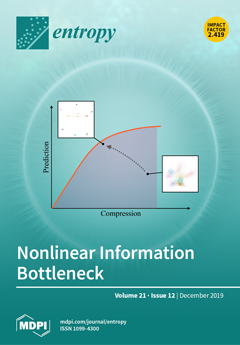This study investigated the application of a modified percussion entropy index (PEI
PPI) in assessing the complexity of baroreflex sensitivity (BRS) for diabetic peripheral neuropathy prognosis. The index was acquired by comparing the obedience of the fluctuation tendency in the change between
[...] Read more.
This study investigated the application of a modified percussion entropy index (PEI
PPI) in assessing the complexity of baroreflex sensitivity (BRS) for diabetic peripheral neuropathy prognosis. The index was acquired by comparing the obedience of the fluctuation tendency in the change between the amplitudes of continuous digital volume pulse (DVP) and variations in the peak-to-peak interval (PPI) from a decomposed intrinsic mode function (i.e., IMF6) through ensemble empirical mode decomposition (EEMD). In total, 100 middle-aged subjects were split into 3 groups: healthy subjects (group 1, 48–89 years, n = 34), subjects with type 2 diabetes without peripheral neuropathy within 5 years (group 2, 42–86 years, n = 42, HbA1c ≥ 6.5%), and type 2 diabetic patients with peripheral neuropathy within 5 years (group 3, 37–75 years, n = 24). The results were also found to be very successful at discriminating between PEI
PPI values among the three groups (
p < 0.017), and indicated significant associations with the anthropometric (i.e., body weight and waist circumference) and serum biochemical (i.e., triglycerides, glycated hemoglobin, and fasting blood glucose) parameters in all subjects (
p < 0.05). The present study, which utilized the DVP signals of aged, overweight subjects and diabetic patients, successfully determined the PPI intervals from IMF6 through EEMD. The PEI
PPI can provide a prognosis of peripheral neuropathy from diabetic patients within 5 years after photoplethysmography (PPG) measurement.
Full article






